
Media war
Last updated: 5 October 2017 From the section 1952 Bhasha Andolon
After the partition of India in 1947, there was practically no national newspaper in Dhaka and elsewhere in the province of East Bengal. The Azad and the Morning News, the only two papers supportive of the Muslim League, were still in Calcutta. A weak faction of the Muslim Leaguers in Calcutta ran the Ittehad. These three papers were gradually shifted to East Bengal. The Jindegi discontinued publication from Dhaka and the Sangbad came out in the early 1950s. The Pakistan Observer came out in 1949. Maulana Abdul Hamid Khan Bhasani, the leader of the newly formed Awami Muslim League, published the Weekly Ittefaq the same year as an ardent critique of the Muslim League government. The weekly, edited by journalist Tofazzal Hossain Manik Miah, soon became popular and was the precursor to the popular Daily Ittefaq of the 1970s and beyond. The left leaning political activists found sanctuary in the daily Insaf in 1950. By this time the daily Paigam of Chittagong and the daily Naobelal of Sylhet were assuming the role of the national dailies.
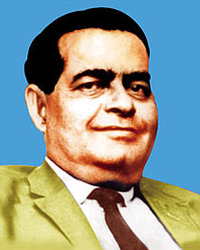 Tofazzal Hossain Manik Miah () http://en.wikipedia.org/wiki/Tofazzal_Hossain_Manik_Miah
Tofazzal Hossain Manik Miah () http://en.wikipedia.org/wiki/Tofazzal_Hossain_Manik_Miah
Bhasha shoiniks begin propagating activities via newspapers
During the early days of the language movement, the pro-Bangla supporters had no mouth-piece of their own. There were two weeklies, Insan and Insaf, edited by Abdul Wahed Chowdhury, supporting the Language Movement. Both these were irregular and short-lived. As such, Prof. Abul Kashem and few other supporters brought out the weekly Sainik (Fighter) on 14 November 1948 to create greater awareness of their endeavours. The Sainik was edited by prominent short story writer Shahed Ali, and volunteer staff included Enamul Huq, Sanaullah Noori, Abdul Ghafur and Mostafa Kamal. The office of the weekly Sainik was initially situated at 48 Captain Bazar but soon it was shifted to the residence of Prof. Abul Kashem at 19 Azimpur, Dhaka, which was already the office of Tamaddun Majlish. Naturally, with both prominent organisations being under its roof, 19 Azimpur soon turned into the nerve-centre of all socio-cultural activities including the Bhasha Andolon.
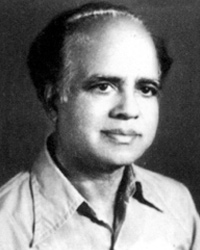 Shahed Ali (1925 - 2001) Educationist, cultural activist and a reputed author. Graduated from Sylhet MC College (1947) and passed MA in Bangla Language and Literature from Dhaka University (1950). Began career as teacher of Bogra Azizul Huq College (1951) and served in Rangpur Carmichael College, Chittagong City College, Mirpur Bangla College and Abuzhar Ghifari College in Dhaka. A founding member of Tamaddun Majlish (1948) and acted as its founder General Secretary then its President. Actively participated in Bhasha Andolon. Elected a member of East Pakistan Provincial Assembly in 1954 from the Khulafay-e-Rabbani Party. Secretary of Islamic Academy (later renamed Islamic Foundation Bangladesh) when it was founded in 1960. Served it for twenty years in different capacities and ultimately became the Director of its Translation and Compilation Department. Author of over 50 books including the highly acclaimed novel Hrday Nadi (1965) and 6 short fictions: Jibrailer Dana (1953), Ekai Samatale (1963), Sha'Nazar (1985), Atit Rater Kahini (1986), Amar Kahini (1987) and Natun Zamindar (1992). Bichar (1987), his only playlet, is admired in drama circles. Founder-editor of the weekly Sainik (mouthpiece of the Language Movement) since 1948. Contributed to journals of Dhaka and Kolkata from pre-partition days. His first story 'Ashru' was published in 1940 in the monthly Saogat when he was a student of Class VIII. Editor of Prabhati (1944-46), the Dainik Buniyad, the Islamic Foundation Gabesana Patrika, Masik Sabujpata and Allama Iqbal Sangsad Gabesana Patrika. His translated works include Makkar Pathe, At-Tawheed, Adhunik Bijnan and Adhunik Manuser Itibrtta. Recipient of numerous awards including Bangla Academy Award (1964), Tamgha-i -Imtiaz (1969), and Ekushey Padak (1989). Born in the village of Mahmudpur, Tahirpur Upazila, Sunamganj
Shahed Ali (1925 - 2001) Educationist, cultural activist and a reputed author. Graduated from Sylhet MC College (1947) and passed MA in Bangla Language and Literature from Dhaka University (1950). Began career as teacher of Bogra Azizul Huq College (1951) and served in Rangpur Carmichael College, Chittagong City College, Mirpur Bangla College and Abuzhar Ghifari College in Dhaka. A founding member of Tamaddun Majlish (1948) and acted as its founder General Secretary then its President. Actively participated in Bhasha Andolon. Elected a member of East Pakistan Provincial Assembly in 1954 from the Khulafay-e-Rabbani Party. Secretary of Islamic Academy (later renamed Islamic Foundation Bangladesh) when it was founded in 1960. Served it for twenty years in different capacities and ultimately became the Director of its Translation and Compilation Department. Author of over 50 books including the highly acclaimed novel Hrday Nadi (1965) and 6 short fictions: Jibrailer Dana (1953), Ekai Samatale (1963), Sha'Nazar (1985), Atit Rater Kahini (1986), Amar Kahini (1987) and Natun Zamindar (1992). Bichar (1987), his only playlet, is admired in drama circles. Founder-editor of the weekly Sainik (mouthpiece of the Language Movement) since 1948. Contributed to journals of Dhaka and Kolkata from pre-partition days. His first story 'Ashru' was published in 1940 in the monthly Saogat when he was a student of Class VIII. Editor of Prabhati (1944-46), the Dainik Buniyad, the Islamic Foundation Gabesana Patrika, Masik Sabujpata and Allama Iqbal Sangsad Gabesana Patrika. His translated works include Makkar Pathe, At-Tawheed, Adhunik Bijnan and Adhunik Manuser Itibrtta. Recipient of numerous awards including Bangla Academy Award (1964), Tamgha-i -Imtiaz (1969), and Ekushey Padak (1989). Born in the village of Mahmudpur, Tahirpur Upazila, Sunamganj
Other newspapers that supported the Bengali Language Movement and the cause of the Rashtrabhasha Sangram Parishad included the Jindegi, Desher Dabi, Pakistan Observer, Millat, Amar Desh, and the weekly Chashi of Mymensingh. In contrast, the Morning News and Sangbad supported the government's Urdu stance. After Muhammad Ali Jinnah's infamous declaration in March 1948, Maulana Mohammad Akram Khan, the president of the East Pakistan Muslim League, and his paper, the Azad, challenged Khwaja Nazimuddin for supporting Jinnah's Urdu stance in the provincial assembly. The Urdu daily Pasban from Dhaka, the Assam Herald and the Jugabheri of Sylhet followed suit, although they also gave some news coverage favouring Urdu.
After Ekushey February tragedy, Abul Kalam Shamsuddin, a member of the treasury bench and editor of Maulana Akram Khans's Azad newspaper, resigned from the provincial assembly in protest. He later inaugurated the first Shaheed Minar built by students on the site of police firing.
The Morning News was set ablaze for its pro-Urdu role whilst the Sangbad was spared.
First pro-Bengali English newspaper in East Bengal
Hamidul Huq Chowdhury, Minister of Finance, Commerce, Labour and Industry in Khawaja Nazimuddin's provincial cabinet, had been encouraged by "friends and foes alike", including Muhammad Ali Jinnah who, whilst visiting Dhaka in 1948, told Hamidul that without an independent newspaper, representative government simply could not function. With this in mind, Hamidul founded the Pakistan Observer, one of the two English newspapers in Dhaka during that time (the other was the Morning News). The first issue issue of the Observer came out on 13 March 1949 and contained the budget statement of the Provincial Assembly which took place early in the month. It was the first local English newspaper in Dhaka to report on the proceedings of the Assembly and other activities of the provincial government.
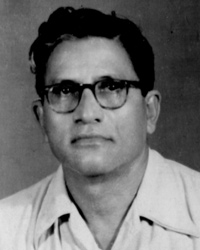 Hamidul Haq Chowdhury (1901 - 1992) Lawyer, media magnet and politician. Passed entrance examination from Scotish Church Collegiate School in Calcutta (1919) and graduated from Calcutta Presidency College (1925). Obtained Law Degree from Calcutta University and joined Calcutta Bar. Elected member of the Bengal Provincial Assembly in 1938 and played active role in the Pakistan Movement. Member of the Radcliffe Commission deputed to determine the boundary between India and Pakistan. After Partition joined Dhaka High Court Bar. Member of the provincial cabinet in charge of the Ministry of Finance and then of Ministry of Land Revenue (1947). Founder of the Pakistan Observer newspaper on 11 March 1949. Elected vice president (1953) of Krishak Sramik Party of Sher-e-Bangla A. K. Fazlul Huq and member of the Pakistan National Assembly (1955) as a nominee of the party. Played a vital role in the formation of Jukta Front. Minister of Foreign Affairs in the coalition government formed by the United Front and Muslim League in the centre in 1955 and played a key role in framing the draft of the Pakistan Constitution of 1956. Appointed Finance Minister (1958) in the cabinet of Firoz Khan Noon and treasurer (1964 - 69) of the Pakistan National Democratic Front (NDF). Joined the Round Table Conference convened by President Ayub Khan at Rawalpindi as a representative of NDF. Opposed the 1971 Muktijuddho. Settled in Pakistan before emergence of Bangladesh and Bengali citizenship was annulled by the Government of Bangladesh in 1972. Returned to Dhaka in 1978 under Ziaur Rahman's government. Dad died when he was 7-years old. Born in the village of Ramnagar, Daganbhuiyan thana,Feni district. Left behind 2 sons and 7 daughters.
Hamidul Haq Chowdhury (1901 - 1992) Lawyer, media magnet and politician. Passed entrance examination from Scotish Church Collegiate School in Calcutta (1919) and graduated from Calcutta Presidency College (1925). Obtained Law Degree from Calcutta University and joined Calcutta Bar. Elected member of the Bengal Provincial Assembly in 1938 and played active role in the Pakistan Movement. Member of the Radcliffe Commission deputed to determine the boundary between India and Pakistan. After Partition joined Dhaka High Court Bar. Member of the provincial cabinet in charge of the Ministry of Finance and then of Ministry of Land Revenue (1947). Founder of the Pakistan Observer newspaper on 11 March 1949. Elected vice president (1953) of Krishak Sramik Party of Sher-e-Bangla A. K. Fazlul Huq and member of the Pakistan National Assembly (1955) as a nominee of the party. Played a vital role in the formation of Jukta Front. Minister of Foreign Affairs in the coalition government formed by the United Front and Muslim League in the centre in 1955 and played a key role in framing the draft of the Pakistan Constitution of 1956. Appointed Finance Minister (1958) in the cabinet of Firoz Khan Noon and treasurer (1964 - 69) of the Pakistan National Democratic Front (NDF). Joined the Round Table Conference convened by President Ayub Khan at Rawalpindi as a representative of NDF. Opposed the 1971 Muktijuddho. Settled in Pakistan before emergence of Bangladesh and Bengali citizenship was annulled by the Government of Bangladesh in 1972. Returned to Dhaka in 1978 under Ziaur Rahman's government. Dad died when he was 7-years old. Born in the village of Ramnagar, Daganbhuiyan thana,Feni district. Left behind 2 sons and 7 daughters.
Pakistan Observer was in favour of more power for the provincial government. It tried to expose every new effort to change the Constitution taking away more power from the province. It became a voice for those political parties which could not get a share in the administration and became accepted as a guide for political arguments and for facts and figures published in the economic fields.
This only succeeded in enraging the people in power in Karachi.
During language crisis the Observer stayed neutral in the issue. They recommended that Bangla should not be relegated to a secondary position, and Pakistan should be a bilingual country with English remaining as the official language for the time being. However, on 13 February 1952, as students organised a 'Flag Day' (where they sold flags and posters in order to raise funds in favour of the language movement), a panic-stricken government, convinced that the movement was aimed at destabilising it, swiftly went into action by taking a number of prominent figures into police custody. Hamidul Haq Chowdhury, known for his vocal opposition to Chief Minister Nurul Amin, was arrested. At the same time, Abdus Salam, editor of the Pakistan Observer, was carted off to prison on the excuse that in an editorial criticising the government, he had committed blasphemy through making certain derogatory remarks about Hazrat Uthman, the third Caliph of Islam. For good measure, the government decreed a ban on the Pakistan Observer despite the fact that the directors of the newspaper as well as its editorial team offered apologies for the editorial in question.
The official government communique cited the subversive role played by the editorial staff and its publisher, the former Muslim Leaguer, Hamidul Huq Choudhury. Actually the newspaper was closed for its intemperate criticism of Nurul Amin and central administration policies . It was also a strong supporter of the demand to give the Bengali language national status. The order curtailing the operation of the Observer was followed by another on the evening of 20 February 1952. Section 144 of the Code of Criminal Procedure was promulgated in the city.
The paper was closed from 13 February 1952 to 1954 when the Jukta Front routed the Muslim League in election.
After the independence of Bangladesh in 1971, the Pakistan Observer was renamed to 'Bangladesh Observer'.
Amateur photographers capture turning point of Bangladesh history
Only three amateur photographers took photographs of the historic Language Movement from 1947 onward. Two of these photographers were students of Dhaka University while another was an employee of Dhaka Medical College Hospital.
Muhammad Taqiullah, son of Dr. Muhammad Shahidullah and a student of Dhaka University, took the photographs of the students’ language movements in 1948. Amanul Haque and Rafiqul Islam, on the other hand, took photographs between February 1952 and 1954, which are the only available visual documents of our glorious Language Movement.
I was then a Dhaka University student and involved with Tamaddun Majlish, a common platform of the political activists who had two-point demand for establishing Bangla as a state language soon after the partition. On that day, I was staying at Fazlul Haque Hall of Dhaka University. Led by M. Toaha, a plan was chalked out to bring out a procession from the university to the secretariat.
On the way to the secretariat, police charged batons on the procession and many including, AK Fazlul Haque, were injured in the attack. Instantly, I rushed to my dormitory and returned with my camera to take photographs.
The photographs featured hundreds of students and political leaders dispersed by police and many lying on the road being injured. At times these photographs have been incorrectly used to showcase the police brutality during 1952 and have been wrongly documented.
Some documents feature my photographs as documents of 1952 movement. In fact, I was in jail at that time. And no question arises of taking photographs in 1952. For my involvement in progressive movements, I was serving in jail between 1951 and 1955.
In fact, my mother preserved the photographs taken on 11 March 1947. I’ve donated all these photographs to a private museum named Bhasha Andolon Museum. I also donated some historical documents such as the pamphlet named ‘Pakistaner Rastrabhasha Bangal Na Urdu’ published on September 15, 1947, by the publicity wing of Tamaddun Majlish.
In the evening of February 21st 1952, I was wandering to take photographs of the dead bodies on Dhaka Medical College Hospital premise knowing several dead bodies of civilians had been taken to the hospital. But I could not trace any such dead body. A government official named Kazi Mohammad Idris came to help me. With his co-operation I found Martyr Rafique's dead body had been kept in the store room of Dhaka Medical College. Instructed by a medical college student named Halima, I went to the room quickly and took the photograph of the dead body.
...I wanted to publish this photograph along with other photographs of the historical movements that took place around Dhaka Medical College and Arts Faculty of Dhaka University But none of the five newspapers agreed to publish those.
Even any press photographer did not take any photographs of the language movement. In fact, photographs taken by me and Rafiqul Islam are the only visual documents of that period. And Muhamad Taqiullah took photographs of language movement at the initial stage in the late 1940s.
Amanul Haque, then an 'Artist cum Photographer' of Dhaka Medical College Hospital
Amanul also took several other photographs featuring agitation by the students of Shorbodolio Kendrio Rashtrobhasha Kormi Parishad (All-Party Central Language Action Committee), Many of these photographs are the only available documents of demonstrations and processions by the students violating Section 144 in Dhaka University area on 21 February 1952. He also took photographs of the major incidents that took place between February 1952 and 1954 when the then East Bengal Legislative Assembly adopted a resolution recommending the recognition of Bangla as one of the state languages of Pakistan.
However, Amanul Haque, who was quite close to legendary filmmaker Satyajit Ray and declared that Ray was his guru, believes that the spirit of the language movement has been derailed these days, though it was the inspiration of all the great movements including the War of Independence. According to Haque, language movement has rather become a kind of celebration of cultural activities in the month of February.
Professor Rafiqul Islam, then a first year student at the Bangla department of the Dhaka University and now a prominent Kazi Nazrul Islam exponent, took photographs during Ekushey February and 22 February 1952 which are invaluable document of the country's history. Prof. Rafiqul took eight photographs on Ekushey February including the historic meeting at Amtala and the preparation of students and leaders before breaking Section 144 in front of Dhaka University’s Old Arts Building.
Noted Tagore singer Kalim Sharafi (later a recipient of Swadhinata Purushkar and Ekushey Padak) presented him a manual camera in 1951 that could only capture eight photographs. "That's why I couldn’t take photographs of the ultimate event", said Rafiqul in a frustrated voice.
As the police monitoring was very strict, I had to go secretly to a studio to develop the reels.
Rafiqul ,
Professor Islam also took snaps of the newly erected Shaheed Minar at Fulbaria in Dhaka in 1952, language martyr Barkat's mother’s visit from India’s Murshidabad to Bangladesh in 1953, and other events that took place at the Shaheed Minar on the 21st February in subsequent years.
Many of his reels were damaged or lost during the Independence War in 1971. After the independence, authorities of National Museum, Rajshahi University Museum and others collected photos from Islam to preserve them. Gonoshasthaya Sangstha (People's Health Agency) also published its yearly calendar using those photos in the mid-seventies. A non-government organization, named SEDH, also used his photographs in their book titled 'Bangla Bhasha Sahittya O Sanskritik Andolan – Itihash O Chobi' in 2005.
Professor Rafiqul Islam donated the photos of Language Movement to Bangladesh Open Source Network in 2008 and many of these are available on Wikimedia.
What Prof. Islam also does not forget to mention is how Bangla has become so rich with elements drawn from other languages particularly those of the Santal, Oraon, Munda, and Kol to mention few. He cautions that the Bengalis should show their respect to other languages that have given so much to Bangla and Bengali culture. He observes that these neighboring languages remain unprotected and neglected, which is a shame for Bengalis who gave their lives for their mother tongue. He calls upon Bengalis to protect and nurture the languages of these indigenous people.
SEHD website
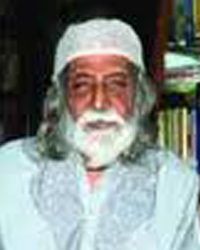 Muhammad Taqiullah ()
Muhammad Taqiullah () 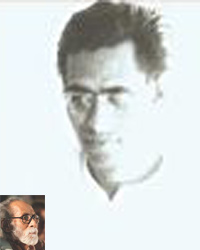 Amanul Haque (Born 1925) Received Bangla Academy Honorary Fellowship (2006) and Ekushey Padak (2011) for his great contribution and courageous steps during language movement. Born at Shajadpur of Sirajbang district
Amanul Haque (Born 1925) Received Bangla Academy Honorary Fellowship (2006) and Ekushey Padak (2011) for his great contribution and courageous steps during language movement. Born at Shajadpur of Sirajbang district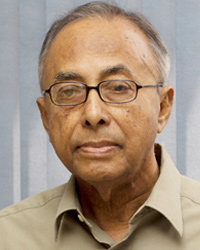 Rafiqul Islam (Born) Ph.D. in Nazrul Studies, University of Dhaka M.A. in Linguistics and Cultural Anthropology, Cornell University (USA) M.A. in Bangla from the University of Dhaka B.A. in Bangla from the University of Dhaka Taught Bengali and Linguistics in Dhaka University from 1961 till 2003 as Senior Lecturer, Associate Professor and Professor. Also held the position of Nazrul Professor, Dhaka University and Director General of Bangla Academy. Was Vice Chancellor of the University of Liberal Arts Bangladesh (ULAB) from 2007 till 2011 and is now its first Professor Emeritus and Head of the Department of General Education. Currently also holds the position of Chairman, Nazrul Institute Trustee Board. Awarded Swadhinata Purushkar and Shaheed Altaf Mahmood Padak in 2012.
Rafiqul Islam (Born) Ph.D. in Nazrul Studies, University of Dhaka M.A. in Linguistics and Cultural Anthropology, Cornell University (USA) M.A. in Bangla from the University of Dhaka B.A. in Bangla from the University of Dhaka Taught Bengali and Linguistics in Dhaka University from 1961 till 2003 as Senior Lecturer, Associate Professor and Professor. Also held the position of Nazrul Professor, Dhaka University and Director General of Bangla Academy. Was Vice Chancellor of the University of Liberal Arts Bangladesh (ULAB) from 2007 till 2011 and is now its first Professor Emeritus and Head of the Department of General Education. Currently also holds the position of Chairman, Nazrul Institute Trustee Board. Awarded Swadhinata Purushkar and Shaheed Altaf Mahmood Padak in 2012.
